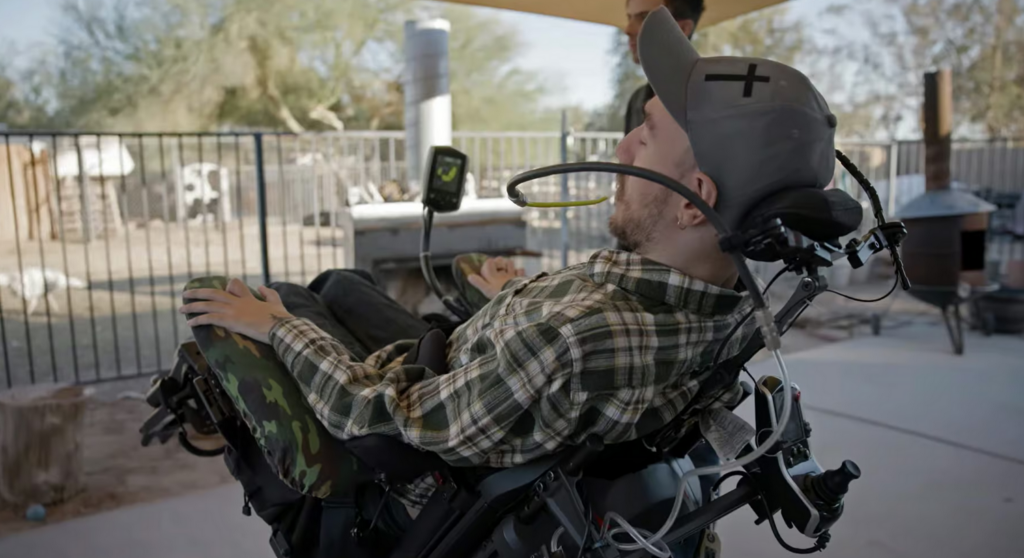In 2016, Noland Arbaugh faced a life-changing event when a swimming accident left him a quadriplegic. His life took another significant turn earlier this year when he became the first person to receive the Neuralink brain implant, known as the Link. Developed by Elon Musk’s company, this device promised to endow him with near-telekinetic abilities.
During an interview on “Good Morning America,” Arbaugh shared his renewed sense of purpose, stating, “I didn’t have anything to wake up for in the morning, and this has changed that for me.” The Link implant has enabled him to control his computer with his mind— a stark contrast to his previous method of using a stylus held in his teeth. This newfound capability has profoundly enhanced his quality of life.
The Link is roughly the size of a large coin and is equipped with 1,024 electrodes distributed across 64 threads. These threads connect to parts of the brain that manage motor functions and are incredibly delicate, necessitating precise placement by Neuralink’s proprietary R1 robotic system. The surgery appeared to be successful without any complications, and Arbaugh was discharged from the hospital the following day. Within a month, he was able to operate a computer mouse cursor via Bluetooth using only his thoughts.
Embedded just under the scalp, the Link is nearly invisible and is powered by induction charging, with a battery life of about eight hours. Arbaugh enjoys playing games like Chess, Mario Kart, and Civilization VI using his mind, pushing the device to its limits until the battery depletes.
However, not all has been smooth. Recently, some of the implant’s threads began retracting, leading to a decrease in the speed at which Arbaugh could control his computer. Despite this setback, Neuralink has updated the implant’s software to compensate for the loss of threads, enhancing its performance beyond its initial capabilities.

Neuralink addressed the issue in a blog post, explaining that they had to recalibrate the recording algorithm to improve sensitivity to neural signals and refine the user interface. These adjustments have significantly improved the implant’s performance, even surpassing its initial functionality.






